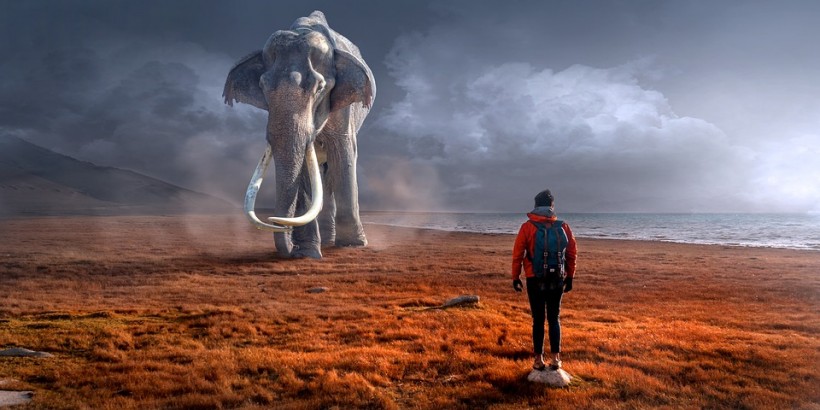
The last woolly mammoth died out about 4,000 years ago on a remote island in the Arctic, studies discovered.
An international team from Universities of Helsinki and Tübingen and the Russian Academy of Sciences believe a mixture of remote habitat, harsh weather conditions, and even the spread of prehistoric man may have sealed the ancient giants' fate.
Woolly mammoths (Mammuthus primigenius) passed away within an astoundingly brief period. These creatures were widely present across Northern Eurasia and North America during the last ice age period 11,700 years ago.
They were found to have kept sticking to a dangerous site on St. Paul Island on the Alaskan waters until 5,700 years ago. But according to the radiocarbon results published in 1995, the longest that woolly mammoths survived was on Wrangel Island in Arctic territory.
However, the mammoths disappeared as part of the global phenomenon of Late Quaternary megafaunal extinction.
Wrangel mammoths outlived other members of the species
According to the study published in the journal Quaternary Science Reviews, those mammoths outlived other members of their species by avoiding the environmental factors that led to their extinction.
The international researchers conducted an isotope examination on countless woolly mammoth's teeth and bones from around the globe to learn and familiarize the natural changes these creatures had to go through.
The Wrangel mammoths thrived due to their use of energy, while other species passed away as 'climate change' changed the composition of their habitat, and genetic diversity shrunk in their isolated communities.
Dr. Laura Arppe, the from the University of Helsinki, who led the team of researchers, said in a statement that Siberian mammoths depend on their fat reserves to survive in the extremely harsh ice age winters. Wrangel mammoths, according to Arppe, did not need to as they live in milder conditions.
The stimulus for the Wrangel mammoths' extinction was unique, too. Different mammoths passed away because of territory loss or absence of food. However, their examples described the number of sulfur levels in Wrangel mammoths' bones escalated close to the end of their existence.
That was because of the weathering of bedrock, which uncovered unsafe minerals that contaminated their water supply, the study said.
An extraordinary weather incident intensified their declining health status. Snow and rain might've covered the ground in a thick layer of ice, the research said, making the mammoths starving from searching food.
Human beings might've assumed a job in their extinction, as well. However, the link is uncertain. The nearest proof of human life on Wrangel Island succeeded the mammoths by only a couple of hundred years, analysts stated. However, they hadn't found any indications of human hunting.
It's too late for these mammoths; however, there's still time to spare fundamentally jeopardized species. Considering the biosignatures in the remaining parts of the last-enduring woollies and what caused their extinction may enable traditionalists to keep these endangered species from death, too.
Following the sudden demise of the woolly mammoth underlines the significance of guaranteeing decent hereditary variety, which is compromised among jeopardized species.
© 2024 NatureWorldNews.com All rights reserved. Do not reproduce without permission.





